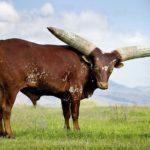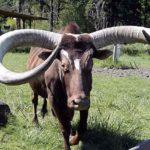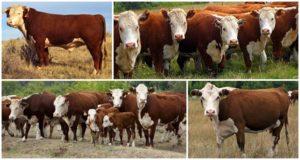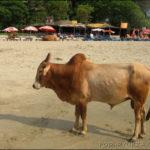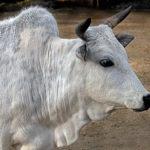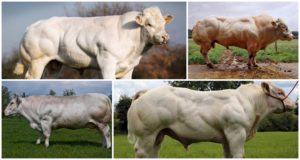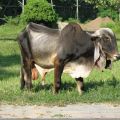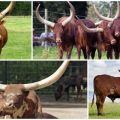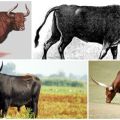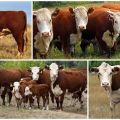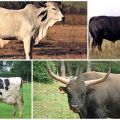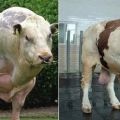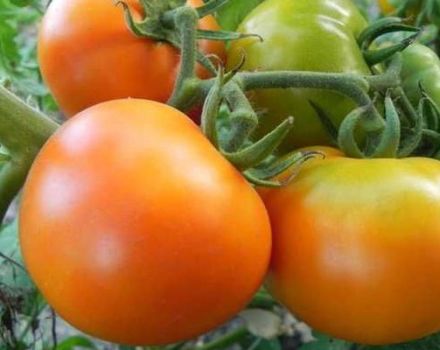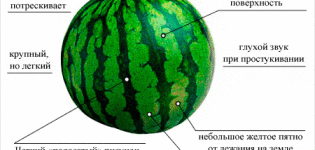Description of 3 breeds of African cows, care and breeding of cattle
Some species of wild animals, whose relatives are successfully bred in private farms, have not been domesticated. Such representatives of wild fauna include the African bull. This buffalo has a large constitution and lives in the savannah. But there are representatives among African cows, which have been bred on farms for several centuries.
A bit of history
Among the African domesticated cows, the watussi bull has become very famous. There is a lot of controversy around the history of this species. The inhabitants of Africa insist that watussi is a separate species of wild cows that appeared during natural selection on the continent 6 thousand years ago. The progenitor in this case is called a relict bull.
According to another version, watussi were isolated as a separate species 4 thousand years ago. The ancestors of this animal are called the humpbacked Indian zebu, which also live in Africa, and the Egyptian cows. This theory is supported by rock paintings and images found during excavations.
Geneticists indicate that both versions are correct. Strings have been found in the watussi DNA, indicating the ancestors of Indian zebu, Egyptian cows, and wild turs. Despite the presence of data obtained in the course of genetic research, scientists cannot determine from which species the African bulls originated.
Cattle of africa
Prolonged droughts, high temperatures and periodic tropical rains, characteristic of various regions of Africa, are not able to withstand all animals. Therefore, the usual domestic cows do not live here. Mainly watussi, Indian buffaloes and zebu bulls are bred here.
Indian buffalo
Indian buffaloes have the following characteristics:
- height - up to two meters at the withers;
- the weight of an adult male is up to 900 kilograms, of a female - up to 670 kilograms;
- body length - up to four meters;
- the average life expectancy is 26 years;
- food - mainly grass, but dry food and vegetables are added.
Indian buffaloes are characterized by an aggressive disposition. Therefore, these animals are less common in households than other cows. Despite their large body weight, Indian buffaloes are mainly bred for milk, not meat.
The fat content of these cows is 9%.Indian buffaloes are valuable for manure, as they often consume algae. Also, animals are bred to obtain skins, from which garments and shoes are then made.
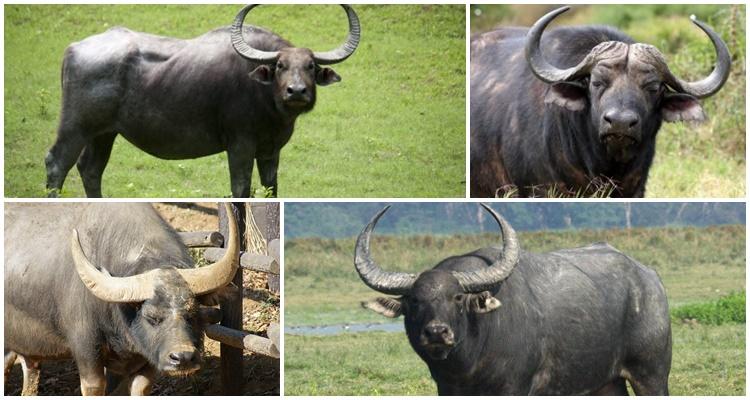
Bull watussi
The characteristic features of watussi include the following:
- wide and massive horns, the base diameter of which reaches 35 centimeters;
- the distance between the horns is 2 meters;
- the length of the horns is up to 3.7 meters;
- the weight of each horn is 45 kilograms.
Such horns in bulls serve for thermoregulation. The height of an adult male watussi reaches two meters, and its body weight is 850 kilograms. Females weigh up to 550 kilograms. These animals are distinguished by a brown body color.
Watussi feed on their own while walking in the pasture. Like Indian buffaloes, these bulls prefer to eat seaweed. The popularity of watussi in Africa is explained not only by large horns: milk and blood of animals are used for ritual purposes.

Zebu bull
If Watussi has large horns for thermoregulation, then Zebu has a hump on the back, which is made up of fat deposits. These cows are characterized by long and sturdy limbs as well as endurance. Therefore, zebu is more often used as a pulling force.
The characteristic features of this cow include an increased content of leukocytes in the blood, which provides stable immunity to common diseases such as foot and mouth disease and tuberculosis.
And because of the non-standard microflora of the stomach, the animal does not suffer from gastrointestinal disorders. Zebu is also grown for milk, the fat content of which is 6%. Adult males can provide up to 83% meat by body weight. At the same time, the resulting product is very tough, but tasty.
How to maintain and care
African cows are unpretentious in care. As noted, animals find food on their own during daily grazing. Moreover, African cows are able to eat hay, which is important in hot climates. The stomachs of local animals have adapted to harsh feeds, and digests such food well. In addition, the cows are given seaweed and vegetables.
Watussi, like other representatives of domesticated livestock, are able to increase body weight without requiring additional minerals or vitamin complexes. Also, small crustaceans may be included in the diet. Daily adult males consume up to 100 kilograms of food, females - up to 70 kilograms.
How to breed
Watussi and other African cows reach sexual maturity by nine months. But local farmers start breeding closer to two years. Heat in females occurs once every 2-3 months.

If animals live in a herd, then farmers give birth to no more than 2% of males of the total livestock. After fertilization, the calves appear after 10 months. The weight of the young is 14-20 kilograms. Females rarely carry two calves.
The young are usually immediately separated from the mother, since the females aggressively protect the offspring.
Interesting Facts
African cows produce 1.5 to 2 tons of milk annually. In this regard, these animals are often bred as draft animals or for meat. In Africa, the livestock population is steadily declining. This is due to the peculiarities of milk yield. The calves are brought to the mother's udder, but after a few sips they are torn off. Because of this attitude, young animals die early.
Due to the fact that watussi is considered a sacred animal in African tribes, each cow is bloodletted, collecting up to four liters of blood monthly, which is then used in rituals. Some peoples use the horns of these bulls as money.

